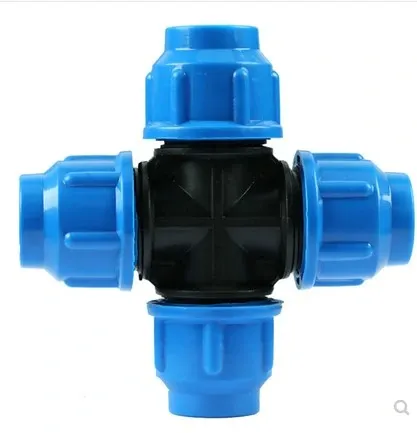Dec . 26, 2024 10:22 Back to list
Connecting PVC and HDPE Products for Efficient Plumbing Solutions
PVC to HDPE Connection Products A Comprehensive Guide
In the world of plumbing and construction, the choice of materials for piping systems is paramount to achieving long-lasting and efficient results. Two of the most commonly used materials for piping are Polyvinyl Chloride (PVC) and High-Density Polyethylene (HDPE). Each has its own unique properties and applications, but scenarios often arise where connecting these two materials becomes necessary. This article explores the various products designed for connecting PVC to HDPE, addressing their benefits, applications, and installation considerations.
Understanding PVC and HDPE
Before delving into connection products, it's essential to understand the properties of PVC and HDPE. PVC is a versatile and durable thermoplastic widely used in construction, plumbing, and electrical applications. Its corrosion resistance, low cost, and ease of installation make it a popular choice for various projects, particularly in drainage and irrigation systems.
On the other hand, HDPE is known for its high strength-to-density ratio and flexibility, making it an ideal material for water and gas distribution systems, among other applications. HDPE is resistant to impact and can withstand a wide range of temperatures, making it suitable for outdoor use and in environments where other materials might fail.
The Need for Connection Products
While PVC and HDPE are both excellent choices for piping systems, there are many instances where a connection is needed between the two. This can occur when upgrading older systems, interfacing different types of pipes, or when the layout of a project requires multiple materials. Connecting these two types of pipes effectively is crucial to maintaining system integrity, preventing leaks, and ensuring efficient flow.
Types of Connection Products
1. Mechanical Fittings One of the most common methods for connecting PVC to HDPE is through mechanical fittings. These fittings typically consist of a clamp or coupling that secures the two materials together. Mechanical fittings are easy to install and can accommodate pipes of various diameters. They allow for a certain degree of flexibility, making them suitable for applications where movement or expansion may occur.
2. Transition Couplings Transition couplings are specialized products designed specifically for joining PVC and HDPE pipes. These couplings usually have one side that fits onto the PVC pipe and another that connects to the HDPE pipe. They come with gaskets or seals to ensure a leak-proof connection, providing extra assurance in high-pressure applications.
pvc to hdpe connection products

3. Fusion Splicing For certain applications, fusion splicing may be utilized, especially when connecting larger diameters of HDPE to PVC. This method involves heating the ends of the HDPE pipes to a molten state and then merging them together. Though this method requires specialized equipment, it results in a continuous, seamless bond that is often stronger than the pipe materials themselves.
4. Adhesive Solutions In some cases, adhesives can be used to bond PVC to HDPE; however, this method is less common due to the different chemical compositions of the two materials. Certain adhesives can effectively create a strong bond, but they may not be suitable for all applications, particularly those involving high pressure or fluctuating temperatures.
Installation Considerations
When connecting PVC to HDPE, several factors should be taken into account to ensure a successful installation
- Pipe Sizes Always verify the diameters of the pipes being connected. Using the appropriate fittings that match the specifications of both materials is critical to achieving a secure connection.
- Environmental Conditions Consider the environment where the pipes will be installed. Temperature fluctuations, exposure to chemicals, and potential movement in the soil can all affect the reliability of the connection.
- Local Codes and Regulations Always adhere to local plumbing codes and standards when selecting connection products and materials. Compliance is vital for safety and performance.
Conclusion
Connecting PVC to HDPE requires careful consideration of the products and methods used. By selecting the right connection solutions—whether mechanical fittings, transition couplings, fusion splicing, or adhesives—you can achieve a reliable and efficient piping system that meets your project's specific needs. Understanding the characteristics of both materials and how to connect them effectively ensures the longevity and functionality of your installations.
-
High-Quality PVC Borehole Pipes Durable & Versatile Pipe Solutions
NewsJul.08,2025
-
High-Quality PVC Perforated Pipes for Efficient Drainage Leading Manufacturers & Factories
NewsJul.08,2025
-
High-Quality PVC Borehole Pipes Durable Pipe Solutions by Leading Manufacturer
NewsJul.08,2025
-
High-Quality PVC Borehole Pipes Reliable PVC Pipe Manufacturer Solutions
NewsJul.07,2025
-
High-Quality UPVC Drain Pipes Durable HDPE & Drain Pipe Solutions
NewsJul.07,2025
-
High-Quality Conduit Pipes & HDPE Conduit Fittings Manufacturer Reliable Factory Supply
NewsJul.06,2025

